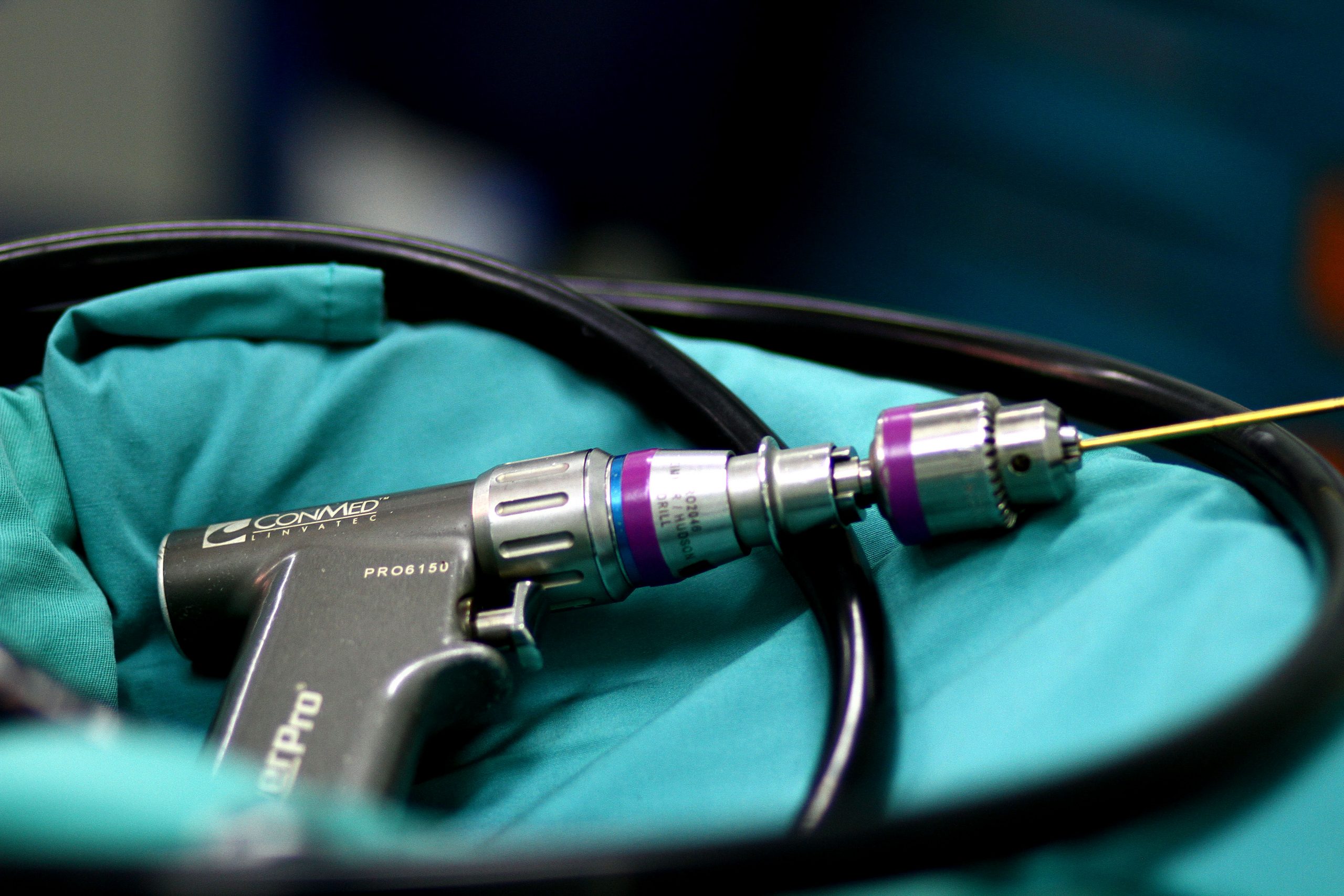

By SHVETALI THATTE
Late one evening, a trauma patient, a mother of three, comes through on an ambulance. She’s having trouble breathing, despite the breathing tube lodged in her throat. Dr. Nikhil K. Murthy, the neurosurgeon on the case, assesses the situation and orders a CT, which reveals a ruptured aneurysm, or a burst blood vessel. Excess fluid in the brain is fatal, as the increased pressure deprives the brain of vital oxygen. A sense of immediacy surges through Dr. Murthy as he calls for the necessary supplies to perform a ventriculostomy to drain the blood. He rushes to connect the drill bit, brace the manual drill against his body, and drill a hole in the right place, at the precise angle and depth. With the urgency of the situation blaring in his mind, Dr. Murthy has only his experience, training, and intuition to ensure that he does not drill past the skull and into the brain. The stakes are high, and a woman’s life is on the table.
Bedside ventriculostomies, like the one described above, are common in the emergency department, as the surgery is often performed in life-or-death situations to immediately relieve fluid build-up in the brain. Dr. Murthy’s experience does not stand alone: countless neurosurgeons have stood in his exact shoes. While Dr. Murthy successfully performed the ventriculostomy, saving the woman’s life, not everyone is as lucky: the complication rate for bedside ventriculostomies in the U.S. stands at an egregious 50 percent.
“When that woman was lying on the table, a drill braced against her skull, what she and I both needed was a safer, more reliable tool to perform the surgery.” – Dr. Nikhil K. Murthy
It is absurd that despite the high complication rate for bedside ventriculostomies, the technology remains antiquated, limiting neurosurgeons in the tools at their disposal and putting patients’ lives at risk. The procedure for a ventriculostomy has been around for thousands of years, but for 6,500 years, the technology used has not changed. A freehand, hand-cranked drill with no guidance or stability puts patients at major risk for damaged brain tissue, misplaced catheters, and increased exposure for infection. In the heat of the moment, even a millimeter of a mistake by the neurosurgeon can cost a patient their life.
The ventriculostomy is an imperative neurosurgical procedure, yet the existing drill is the exact make and model of the drill that was used by surgeons from as early as the 1980s. Mistakes are being made, money is being wasted, and patient lives are being cut short; change must be on the horizon.
A study in the Journal of Neurosurgery looked at how hospital charges varied for patients with bedside ventriculostomies, specifically external ventricular drains (EVD). The conclusions revealed shocking numbers:
- Hospital charges for the care of patients with EVDs within the ICU can be upwards of $7.2 million in the span of a year, as compared to $3.1 million for patients with EVDs on the floor.
- For patients, those in the ICU pay three times the amount as someone who receives the procedure on the surgical floor.
The high risk for complications posed by bedside ventriculostomies has led many institutions to require patients to be admitted to an ICU, even though the procedure itself can be performed on a general neurosurgical floor, and in many cases, may be required in the emergency room. The ICU burden associated with EVD placement has driven the price up for patients, including those without complications. More importantly, unnecessary ICU space is being occupied by EVD patients, who would benefit from receiving the procedure on the general floor if adequate technology was available.
Amidst COVID-19, the need for healthcare reform in the United State is more critical than ever before. Providers are facing increasing pressure to maximize clinical benefit while minimizing expenditure, a particularly difficult paradox given current healthcare spending.
The need for new technology in neurosurgery is manifest. Lives, nor money, can no longer be wasted by relying on rudimentary, middle-aged tools based on designs from 4500 BC.
Shvetali Thatte, a Neuroscience major at Case Western Reserve University, is passionate about driving change in healthcare through policy-based activism and technological innovation.
